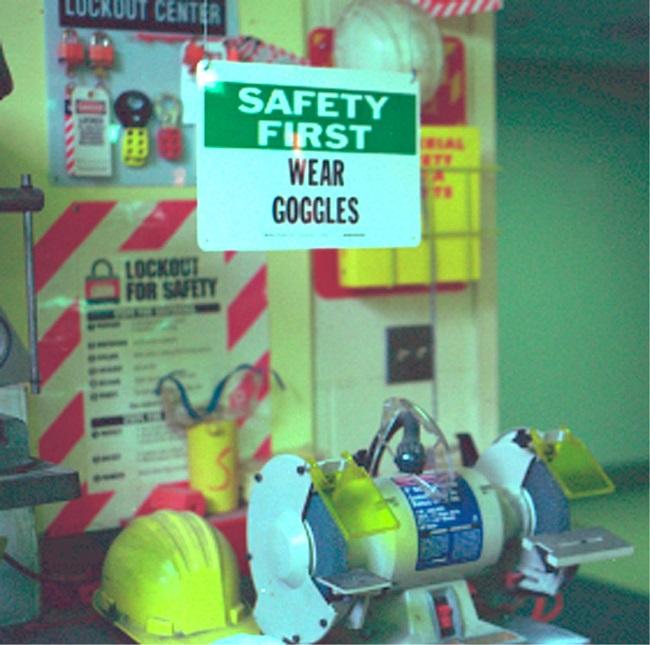Workplace safety is a critical issue that affects not only the health and well-being of employees but also the success of a business. One of the most effective ways to promote safety in the workplace is through the use of safety signs. These signs can help to reduce accidents and injuries by providing clear, concise information about potential hazards and how to avoid them. But, not all safety signs are created equal. To truly be effective, safety signs must meet certain standards and best practices.
Safety signs must be visible and easy to read. This means using contrasting colors, clear text, and simple symbols that can be understood by all employees, regardless of their language or reading level. This is critical for ensuring that employees are able to quickly and easily identify potential hazards and take the necessary precautions to avoid accidents and injuries. Additionally, safety signs should be placed in strategic locations where they are most likely to be seen, such as at eye level and near the potential hazard. This increases the chances that employees will see the signs and take notice of the information they contain. It’s also important to make sure that the signs are not obstructed by other equipment or materials and that the signs are not placed in an area with poor lighting.
Safety signs must also be relevant to the specific hazards that are present in the workplace. This means that different types of safety signs should be used for different types of hazards, such as warning signs for hazardous chemicals and emergency exit signs for emergency evacuation routes. This is important for ensuring that employees are able to quickly and easily identify potential hazards and take the necessary precautions to avoid accidents and injuries. Additionally, safety signs should be updated as necessary to reflect changes in the workplace or new hazards that may arise. This ensures that employees always have the most up-to-date information about potential hazards and how to avoid them. It’s also important to make sure that the signs are not misleading or confusing, as that can lead to accidents and injuries.
Another important consideration when it comes to safety signs is compliance with regulations. This means that safety signs must meet the requirements of the Occupational Safety and Health Administration (OSHA) and other relevant regulatory bodies. This includes using the correct colors, symbols, and text as outlined in OSHA guidelines, and ensuring that all safety signs are properly maintained and replaced as necessary. Compliance with regulations is crucial for ensuring that employees are protected from potential hazards, and it can also help to avoid costly fines and penalties for noncompliance. It’s important to make sure that the signs are up-to-date and comply with the most recent regulations.
Safety signs should also be regularly inspected to ensure they are in good condition and legible. If a safety sign is missing, damaged, or difficult to read, it should be replaced or repaired immediately. This ensures that employees have the information they need to stay safe, and it also helps to maintain compliance with OSHA regulations. Regular inspection also ensures that the signs are still relevant, and that they’re not outdated or no longer accurate. It’s also important to make sure that the signs are not damaged or obstructed by other equipment or materials, as that can make them difficult to read.
Another best practice is to use safety signs in conjunction with other safety measures. Safety signs alone can’t prevent accidents and injuries, they should be used in conjunction with other safety measures such as employee training, regular safety inspections, and emergency preparedness plans. This helps to create a comprehensive safety culture that prioritizes the well-being of employees. Safety signs are just one piece of the puzzle, and it’s important to have other safety measures in place to ensure that employees are protected from potential hazards.
Lastly, Safety signs should be labeled with the company name and phone number. This is important in case of emergency, the workers or first responders can contact the company for help or guidance. It’s also important to make sure that the signs are labeled with the company name and phone number, as that can help employees to identify the company quickly and easily in case of an emergency. This can be especially important if the emergency is serious and requires immediate medical attention.
Safety signs are an essential tool for promoting safety in the workplace. By following standards and best practices for promoting safety in the workplace. By following standards and best practices for safety signs, companies can help to reduce accidents and injuries, maintain compliance with regulations, and create a culture of safety that prioritizes the well-being of employees. It is essential to remember that safety signs are not just a one-time investment, but it’s a continuous process of maintenance, inspection, and updating. A safety sign that’s not maintained or inspected properly can lead to serious accidents and injuries. By keeping safety signs in good condition, relevant and up-to-date, and by using them in conjunction with other safety measures, companies can help to ensure that their workplaces are as safe as possible for their employees.
In order to achieve the best results, it is important to involve all employees in the process of creating and maintaining safety signs. Employees can provide valuable feedback on the effectiveness of the signs, and they can also help to identify new hazards or areas where additional signs may be needed. Additionally, it is important to educate employees about the importance of safety signs and how to use them correctly. This can include providing training on the meanings of different types of signs, as well as the proper procedures for responding to different types of hazards. By working together, employers and employees can create a safer workplace for everyone.










